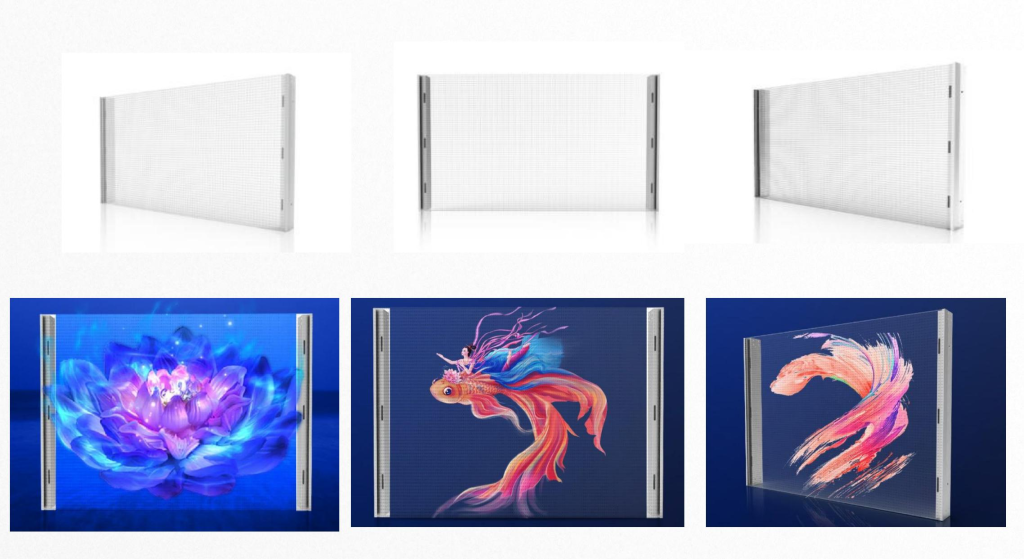Transparent LED displays are an exciting and innovative technology that combines the visual capabilities of traditional LED screens with the added benefit of transparency. This allows for a wide range of creative applications in advertising, architecture, retail, and more.
What Are Transparent LED Displays?
Transparent LED displays are screens that can display images, videos, and text while allowing light to pass through them, maintaining a degree of transparency. This transparency allows viewers to see both the display content and the objects or scenery behind the display.
How Transparent LED Displays Work?
LED Modules:
Transparent LED displays are made up of LED modules that contain rows of LED lights mounted on a transparent material like glass or a clear plastic substrate.
These modules are arranged in a grid pattern, allowing for even distribution of the LEDs.
Transparent Substrate:
The LEDs are affixed to a transparent substrate, usually made from materials like glass or acrylic, which enables the passage of light.
The design and spacing of the LEDs ensure that the substrate remains largely transparent.
Control System:
A control system manages the power and signal transmission to the LEDs, allowing for the display of dynamic content.
The system can be controlled via a computer, media player, or other devices, enabling the customization of the displayed content.
Transmission of Light:
The design of transparent LED displays allows for a high level of light transmission.
When the LEDs are off, the display appears nearly invisible, maintaining the transparency of the substrate.
Brightness and Visibility:
Transparent LED displays are designed to be bright enough to be visible even in well-lit environments, making them suitable for various applications.
Applications of Transparent LED Displays
Retail and Advertising:
Storefront Windows: Transparent LED displays can be used in storefront windows to attract customers with dynamic advertisements while allowing them to see inside the store.
Product Displays: Enhance product displays with interactive and engaging visual content.
Architecture and Interior Design:
Building Facades: Integrated into building facades to create dynamic visual effects and interactive surfaces.
Interior Partitions: Used in offices and public spaces to create partitions that can display information or advertisements while maintaining transparency.
Automotive:
Car Windows: Integrated into car windows for heads-up displays (HUDs) and interactive advertising.
Sunroofs: Used in sunroofs to provide information and entertainment without obstructing the view.
Public Spaces and Transportation:
Bus Stops and Train Stations: Provide real-time information, advertisements, and entertainment in public transportation hubs.
Airport Terminals: Used in airport terminals for displaying flight information, directions, and advertisements.
Events and Exhibitions:
Stage Backdrops: Create dynamic stage backdrops for concerts, theater performances, and events.
Exhibition Booths: Enhance exhibition booths with interactive and dynamic displays.
Healthcare:
Hospital Windows: Used in hospital windows to provide a calming environment while displaying important information.

